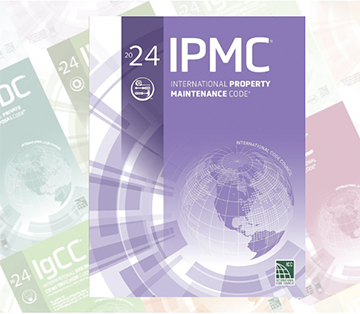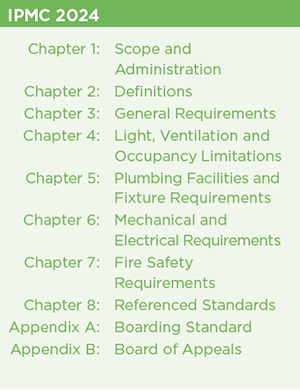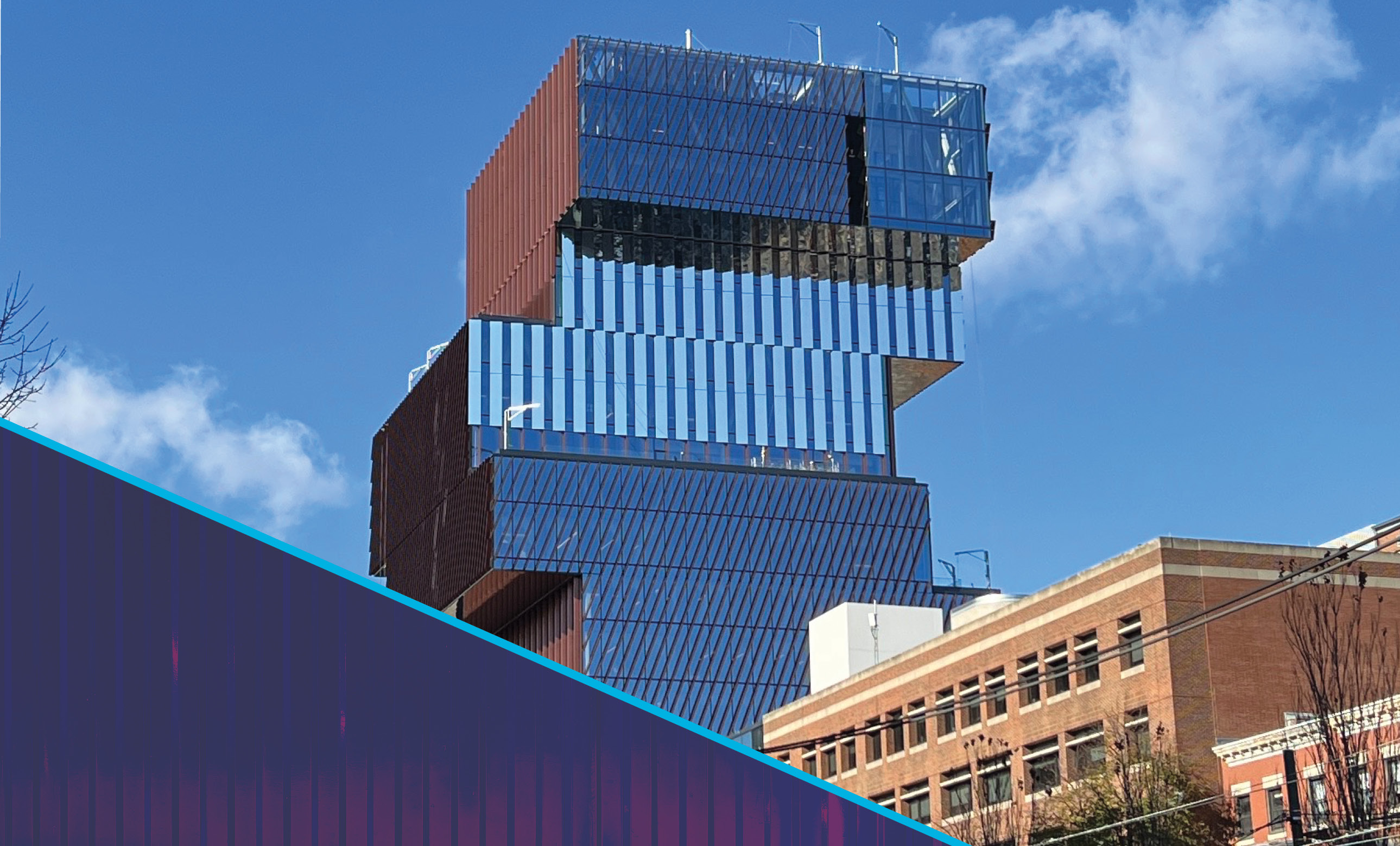
The International Code Council®’s International Property Maintenance Code® establishes minimum requirements for the maintenance of existing buildings, including their roof systems, through model code regulations. IPMC 2024 has several roofing-related requirements and can be used as a basis for roofing contractors performing periodic roof system maintenance.
IPMC 2024
The IPMC originated in 1996 when a committee consisting of representatives of the three legacy code organizations (Building Officials and Code Administrators International, International Conference of Building Officials and Southern Building Code Congress International) drafted comprehensive guidelines for existing buildings based on the legacy codes’ requirements for existing buildings.
In 2000, ICC published the first edition of IPMC using ICC’s code development process. New editions have been published every three years since with the most current edition being IPMC 2024.
IPMC 2024 has eight chapters and two appendixes (see figure). The appendixes are not mandatory unless specifically referenced in a jurisdiction’s adoption ordinance.
The code applies to all existing residential and nonresidential structures and is intended to establish minimum requirements to provide a reasonable level of health, safety, property protection and general welfare insofar as they are affected by a building’s continued occupancy. Existing buildings that do not comply with the code’s provisions are required to be altered or repaired to provide a reasonable minimum level of health, safety and general welfare as required by the code.
Section 102.3-Applicaton of Other Codes indicates any repairs, additions or alterations must be done in accordance with the jurisdiction’s other applicable codes, most commonly the International Existing Building Code,® International Building Code® and International Residential Code.®
Section 102.7-Historic Buildings states the code’s provisions are not mandatory for existing historical buildings where the building is judged by the code official to be safe and in the public interest of health, safety and welfare.
Building owners are required to maintain their structures and exterior property in compliance with IPMC 2024 and the code under which the building was constructed except as otherwise provided in the IPMC.
Roofing considerations
A majority of IPMC 2020’s provisions specific to roof systems are provided in Section 304-Exterior Structure. Section 304.1.1-Potentially Unsafe Conditions provides a list of conditions that should be assessed and, if necessary, addressed according to IEBC, IBC or IRC as applicable. Item 2 on the list includes anchorage of roofs to walls or columns and stipulates there should not be distress that appears to reduce load-carrying capacity.

Item 7 on the list includes roofing materials and components that have defects that admit rain, roof surfaces with inadequate drainage, or any portion of the roof framing with signs of deterioration or fatigue.
Section 304.7-Roofs and Drainage indicates roofs and flashings must be sound, tight and not have defects that admit rain. Roof drainage is required to be adequate to prevent dampness and deterioration at walls and in the interior portion of a roof structure. Roof drains, gutters and downspouts are required to be free of obstructions and in good repair. Roof drainage cannot be discharged in a manner creating a public nuisance. In Chapter 5-Plumbing Facilities and Fixture Requirements, Section 507.1 also indicates roof drainage is not permitted to be discharged in a manner creating a public nuisance.
Chapter 7-Fire Safety Requirements, Section 703-Fire-resistance Ratings and Section 703.1-Maintenance requires the fire-resistance rating of fire-resistance-rated construction must be maintained. Such elements are required to be visually inspected annually by the building owner and be repaired, restored or replaced if damaged, altered, breached or penetrated. Records of inspections and repairs must be maintained.
Roofing contractors’ roles
Roofing contractors who perform roof asset management and maintenance and repair services can assist building owners in complying with IPMC 2024’s roofing-related requirements. Specific roofing-related items required by IPMC 2024 (repairing roof system leaks; clearing roof drains, gutters and downspouts of debris; and noting any ponding water conditions) typically are included in roofing contractors’ routine roof system service and maintenance programs.
IPMC 2024’s requirement for annual visual inspection and maintaining fire-resistance ratings is rather nonspecific and broad in the context of roof systems. Examples of visible surface conditions that may affect a roof system’s fire classification include scour of aggregate surfacings, loss of mineral-granule surfacing, and roof coating erosion or flaking. If these conditions exist, they should be noted and reported to building owners.
Other than the annual visual inspection and maintenance of fire-resistance ratings, IPMC 2024 does not specify inspection and maintenance frequency. NRCA maintains its long-standing recommendation that roof systems should be inspected and any necessary repairs be made twice a year. Additional inspections and maintenance may be necessary after severe weather is experienced.
NRCA has published inspection and maintenance documents addressing built-up and polymer-modified bitumen membrane, single-ply membrane, architectural metal panel and structural metal panel roof systems that can be used for conducting periodic roof inspections and maintenance. Each document includes checklists that can be used for documenting inspections and noting any necessary repairs to building owners.
Additional information about repairs for membrane roof systems is provided in NRCA’s Repair Manual for Low-slope Membrane Roof Systems, 2nd Edition. Repair guidance for asphalt shingle roof systems is provided in The NRCA Repair Manual for Asphalt Shingle Roof Systems. These NRCA repair manuals can be purchased from shop.nrca.net.
MARK S. GRAHAM is NRCA’s vice president of technical services.
@MarkGrahamNRCA



